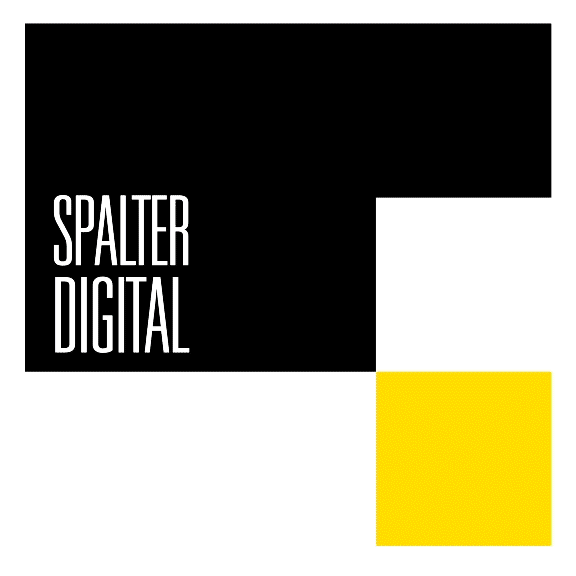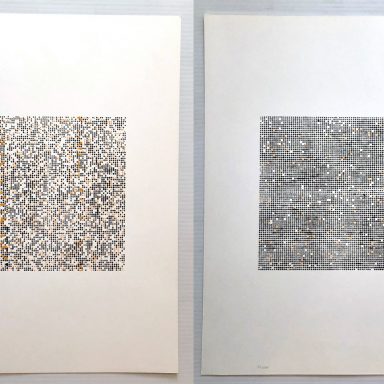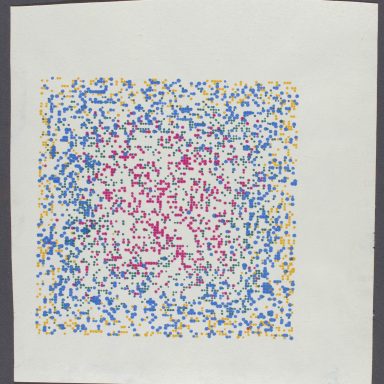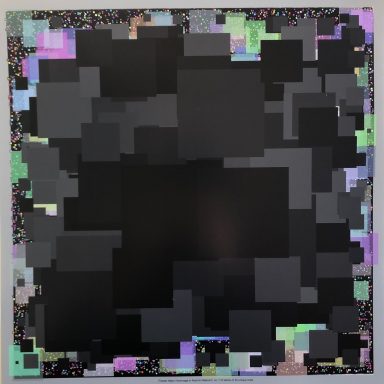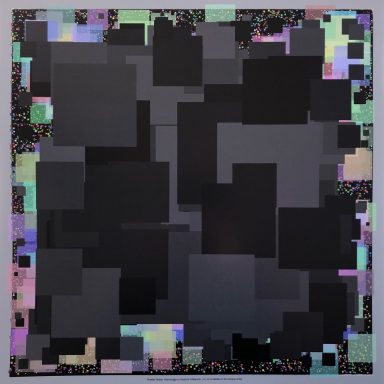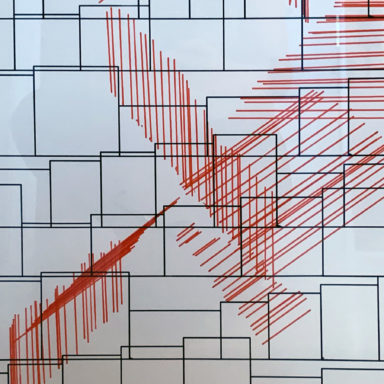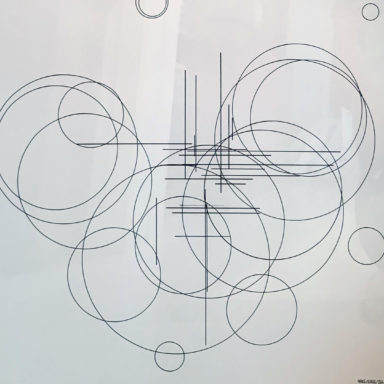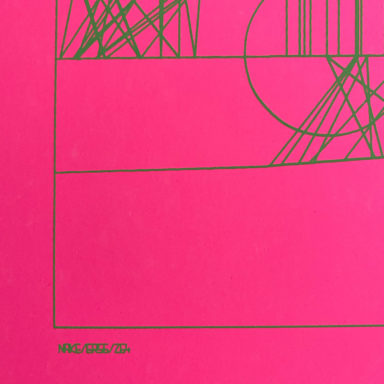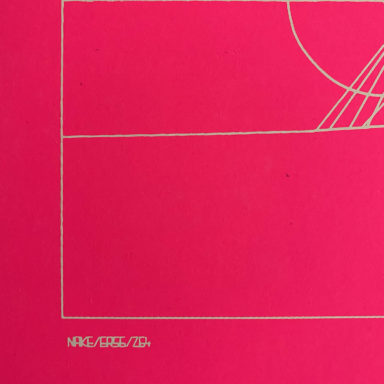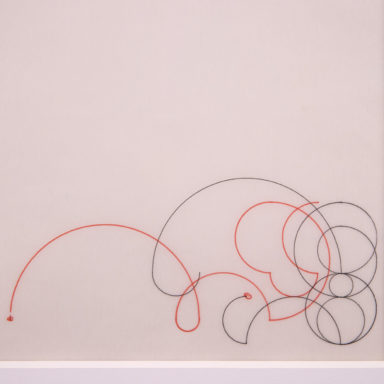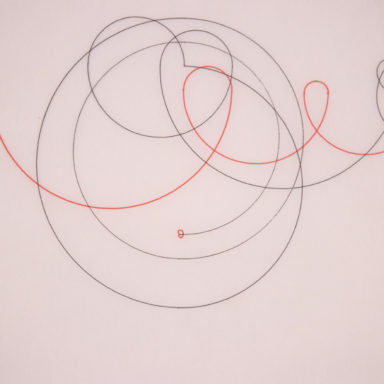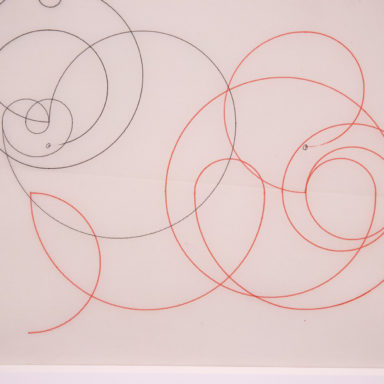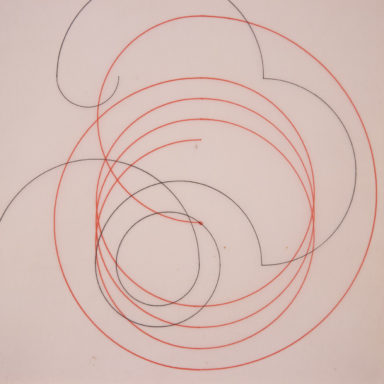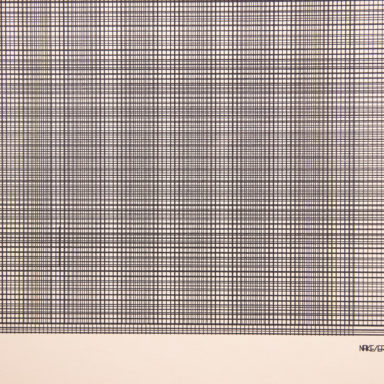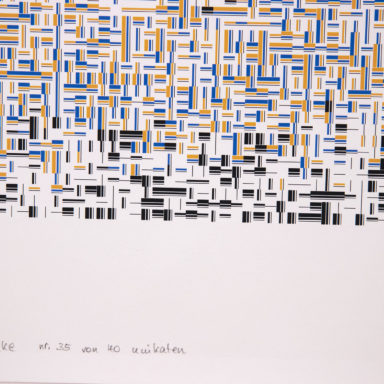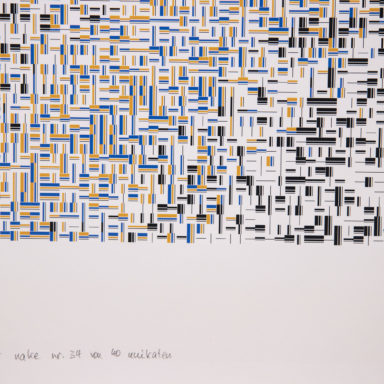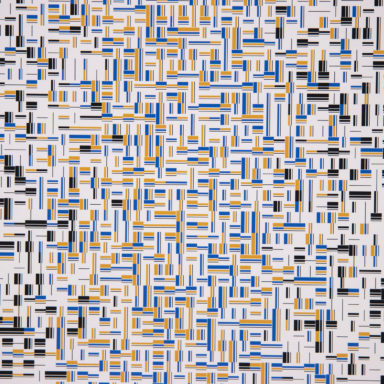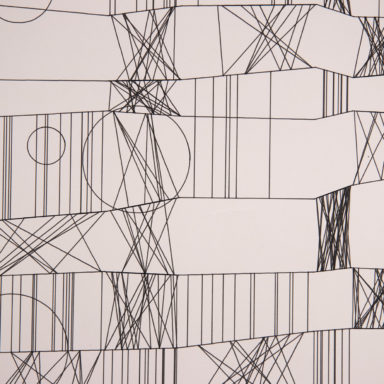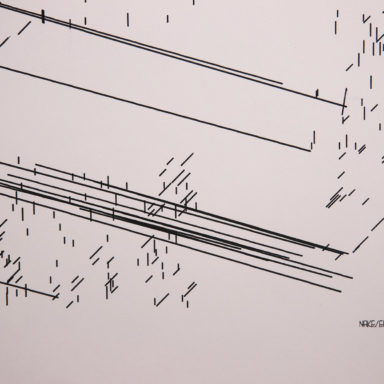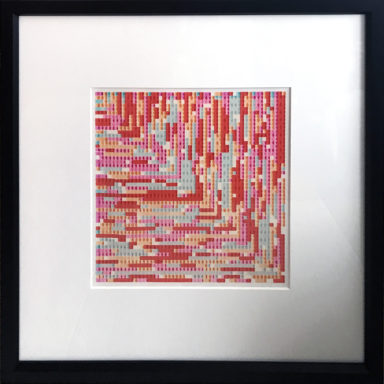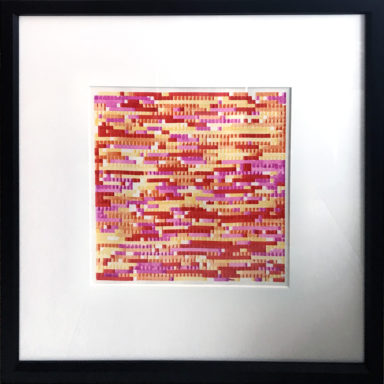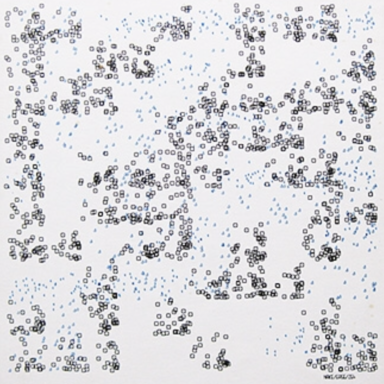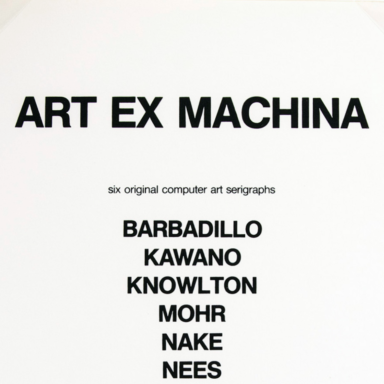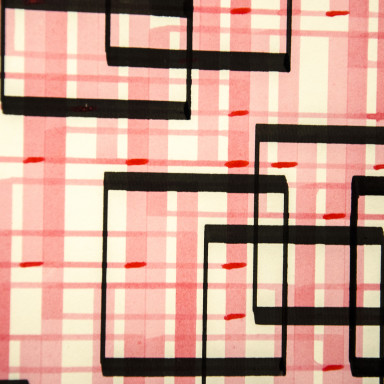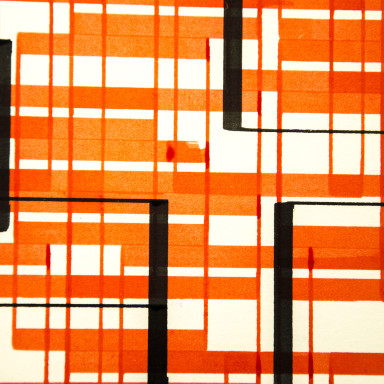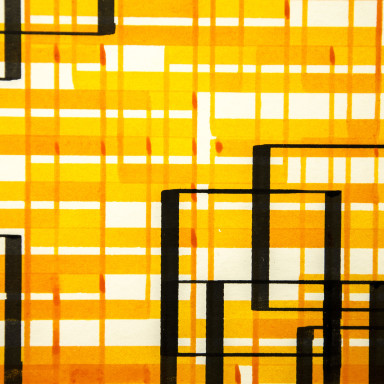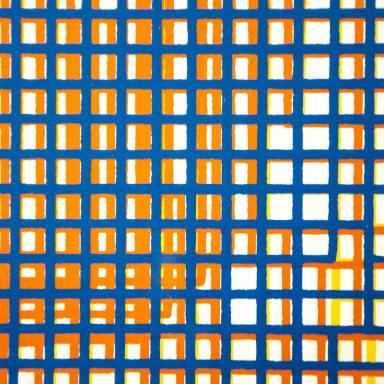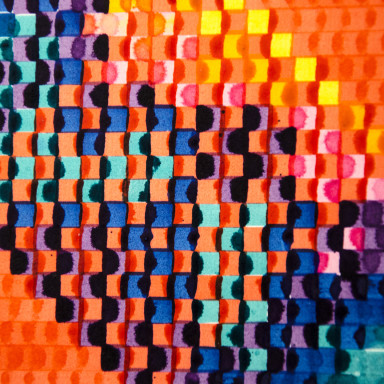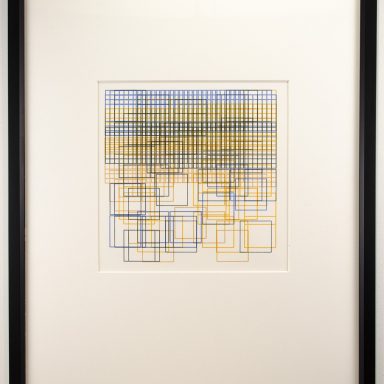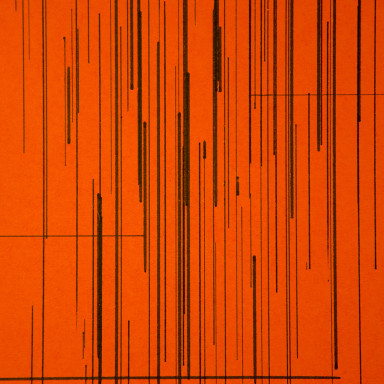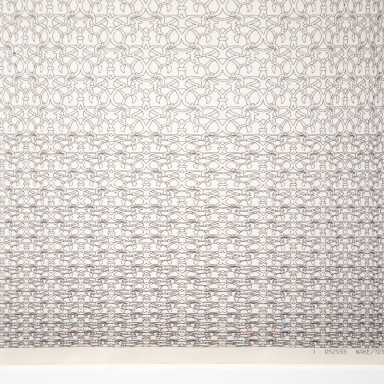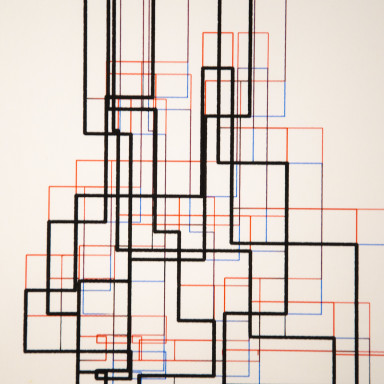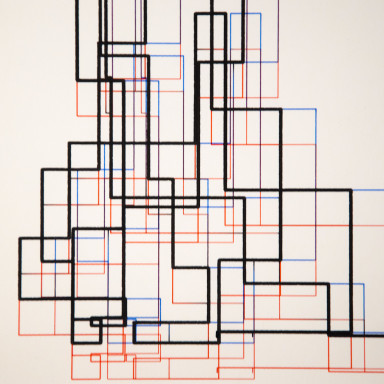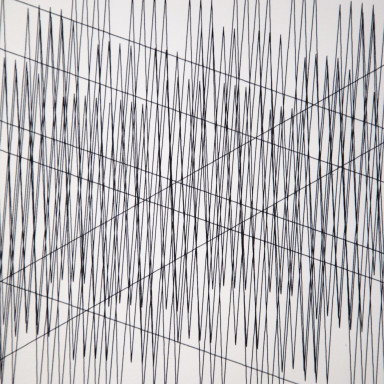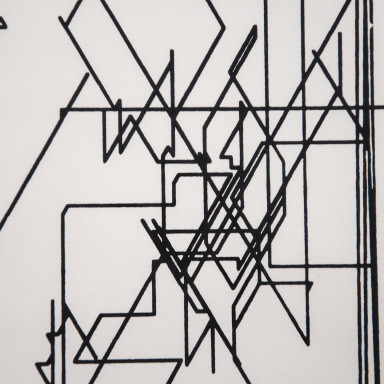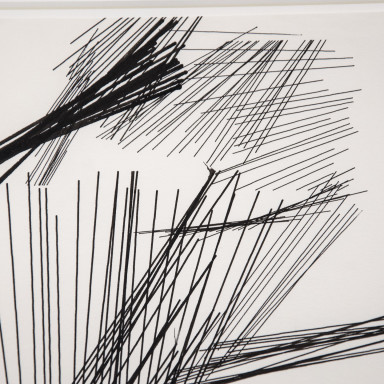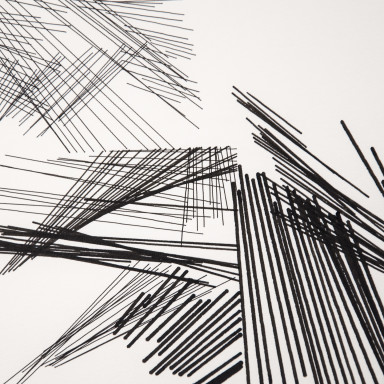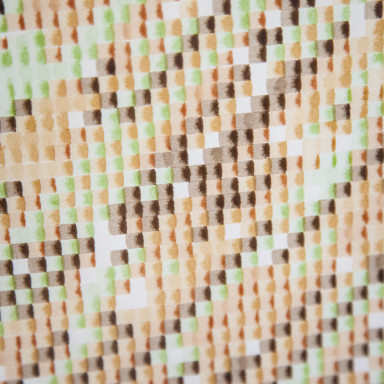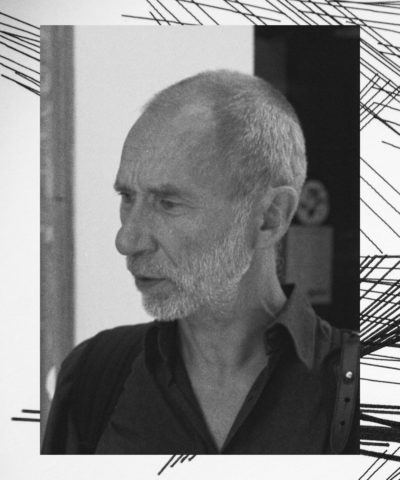
Basic Info
Name: Frieder Nake
Country of Origin: DE
Description
Frieder Nake belongs to the founding fathers of (digital) computer art. He produced his first works in 1963. He first exhibited his drawings at Galerie Wendelin Niedlichin Stuttgart in November 1965. His early work was influenced by Max Bense’s Information Aesthetics. Until 1969, he went through a succession of increasingly complex programs, from machine language to PL/I. His main work phases are identified by the collection of programs, compArt ER56 (1963-65), Walk-through-raster (1966), Matrix multiplication (1967/68), Generative aesthetics I (1968/69). He declared not to continue producing computer art in 1971 when he published the note, There should be no computer art in page, the Bulletin of the Computer Arts Society. His reasons were mainly of political origin: He did not see how he could actively contribute to computer art and, at the same time, be a political activist against capitalism. He resumed publishing on computer art in the mid 1980s with the break-down of the radical left. With the start in 1999 of project »compArt: a space for computer art«, Nake returned to his roots as a theoretician, writer, creator, and teacher in the domain of digital art and way beyond. He is head of »compArt: Center of Excellence Digital Art«.
Frieder Nake has been a full professor of computer science at the University of Bremen, Germany, since 1972. Since 2005, he has also been teaching at the University of the Arts, Bremen. His teaching and research activities are in computer graphics, digital media, computer art, design of interactive systems, computational semiotics, and general theory of computing. Nake was represented at all important international exhibitions on computer art. He has published in all the areas mentioned above, with a preference for computer generated images.
“The drawings were not very exciting. But the »principle« was!“ (Nake 2004/2005).
Born 1938, he lived in Stuttgart in the late ’60s and produced Matrizenmultiplikation portfolio.
This is one of many works of computer or algorithmic art that Nake made between 1963 and 1971. All of these include abstract images produced using a computer, a tape machine and a drawing machine. Other artists such as A. Michael Noll and George Nees were also working in similar ways during this period. The title of this portfolio refers to Nake’s practice of producing numerical matrices and then programming a computer to multiply the numbers various times. The title therefore draws the viewer’s attention away from the finished picture and towards Nake’s computational process. This emphasis is perhaps explained by his statement in 2010 that ‘every individual piece of algorithmic art is no more than only one instance of the potentially infinitely many from the class of works defined by the algorithm. The tragedy is that the algorithm itself does not often show visual qualities. Its qualities are the potential to generate visual works. But each of its visual products is a shadow only of the algorithm’ (Nake 2010, p.56).
The art historian Grant D. Taylor has argued that Nake’s computer-based methods ‘break with the traditional process of building an image from visual structures, because the input data is merely computing operands’ (Grant D. Taylor, When the Machine Made Art, London 2014, p.78). Nake has gone further, arguing that in computer art, ‘The individual human subject simply did not exist anymore, once he or she had set the boundary conditions for the image to be computed’. Nonetheless, in the same text he also acknowledged that his computer art remained somewhat ‘traditional’, since it ‘resulted in paper work to be put up on the walls of a gallery’ (Nake 2010, p.62).
Further reading
Frieder Nake, ‘Notes on the Programming of Computer Graphics’, in Jasia Reichardt (ed.), Cybernetic Serendipity: The Computer and the Arts, Studio International Special Issue, London 1968, pp.77–8.
Frank Dietrich, ‘Visual Intelligence: The First Decade of Computer Art (1965–1975)’, Leonardo, vol.19, no.2, 1986, pp.159–69.
Frieder Nake, ‘Paragraphs on Computer Art, Past and Present’, Cat 2010: Ideas before Their Time: Connecting the Past and Present in Computer Art, Swinton 2010, pp.55–63.
